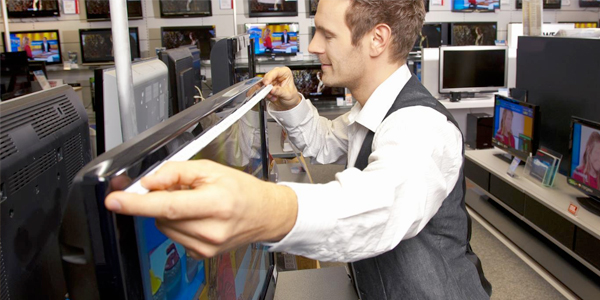Buying a TV 101: Size Matters by Scott Huffman

Size matters. It really does. Some time ago, a customer came into my showroom looking for a new television for her living room. I asked her what size interested her. She told me 32 inches was big enough. I then asked her how far away from the television she typically sits. “Twenty feet,” was her reply. Instantly, I began to explain the science of why a 32-inch screen would be too small for the distance. She didn’t want to hear my explanations.
We have all heard that a picture is worth a thousand words, so I took her into our Home Theater Demo Room. “This looks great," she complimented. "How far away am I sitting from the 100” screen?” Twelve feet, I explained. Instantly, she realized the 32-inch TV would not do from her couch 20 feet away in her new living room. In the end, she settled on a 55-inch display and is enjoying American Idol much more now.
Key factors will dictate which TV size is right for you. Whether you are watching an NFL Game or Pirates of the Caribbean, the idea is to immerse yourself into the event. When the picture and sound are a perfect match, your heart starts pumping, and you feel as if you are there, in the middle of the action! The only time a display is literally too big is when you cannot take in the screen width without moving your head or eyes. Much like when you are late to the movies, and you are forced to sit where no one wants to sit - in the front three rows! No one has to tell the people the movie experience is terrible in the front three rows. You just know it.
It all comes down to size versus viewing distance. Keep these three rules in mind, and your family will thank you.
- Viewing distance to screen size ratio: The recommended viewing distance is 3 to 4 times the screen size. For example, a 32” HDTV will provide a movie type experience from 4 to 6 feet away. On the other hand, it is best to view a 60” HDTV at a distance of 9-16 feet.
- Diagonal screen sizes are hard to compare: All TVs are measured diagonally. This is very misleading when comparing TV prices. A 52” TV may not seem that much different than a 60”. It is only 8 inches. Until you look at the true size. When measuring the surface area of the screen by taking the screen width multiplied by the screen height, you get a true comparison of size. (And a better understanding of the cost difference.)
- Buy the largest TV that will fit: Sometimes the size is limited by the design of the room, cabinets, or budget. In any case, buy the largest TV possible, and odds are you will have a better experience.